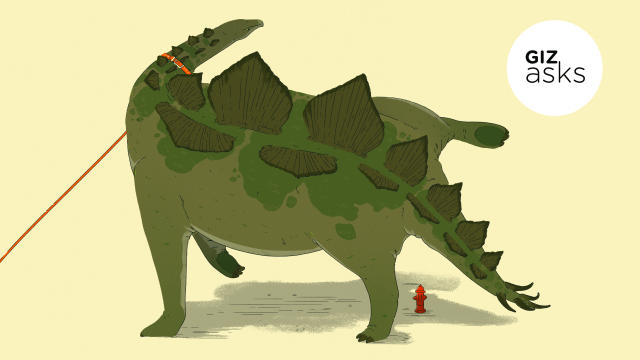With de-extinction hovering on the edge of being a thing, it is worth asking at least one question. That question is not “why?” or “is this a good idea?” If it can be done, it will be, and that’s that.
No, the question is: which formerly extinct animals should we domesticate? The cat/dog paradigm has reigned for far too long; whole new realms of cuteness and companionship might be in store for us, once we start reviving woolly mammoths and Great auks. For this week’s Anne Weil
Associate Professor, Anatomy and Cell Biology, Oklahoma State University Center for Health Sciences, whose research focuses on early mammalian evolution, phylogeny and the biogeography of multituberculate mammals, among other things.
One of my favourite fantasy books features a pet albino Megatherium, a giant ground sloth from South America that was 6.10m high. However, the character whose companion this was is a queen. As an average citizen, I don’t command the resources to procure the necessary amount of roughage for a multi-ton Megatherium, or any other very large and charismatic animal. Also, it might be hard to clean up after without a palace staff. While I would like to see mammoths roaming the plains and packs of theropod dinosaurs hunting, I feel the megafauna is better left outside.
What I want in a pet is that it be cute, entertaining and surprising, and companionable. Showing respect to my current pet, a large house rabbit, I considered the giant bunny Nuralagus rex, which lived on the island of Minorca about 5 million years ago.
Nuralagus, which weighed about 12kg, might eat only one cup of pellet and eight or nine cups of greens and vegetables a day! But it couldn’t hop, and probably didn’t have long ears, so it might not be as cute as the bunny I already have.
As anyone who has ever watched a video of a platypus or echidna puggle knows, Mesozoic mammals were the most adorable mammals. So if I could have any fossil mammal as a pet, it would be an Arboroharamiya jenkinsi.
Arboroharamiya scampered along tree branches about 160 million years ago in what is now China, perhaps eating insects and seeds. It weighed about three-quarters of a pound, and had long fingers and toes and a gliding membrane like a flying squirrel. But Arboroharamiya was not a rodent, it belongs to a group of mammals that has no living descendants. Maybe I should have more than one so they wouldn’t be lonely!
I would make them a nest shelf up near my ceiling, and be amused by their jumping from the top of one bookcase to the next, and hanging from my shower curtain rod by their prehensile tails. Of course, much like keeping a squirrel in the house, one would have to put up with some destruction.
I expect they would nibble on things and might be hard to train to use a litter box. But it would be totally worth it to have a pair eating pine nuts from my hand (I won’t lie, I would totally film how they chewed, which is a matter of scientific interest) and curling up on my shoulders while I write. If they got along with each other we could find out how they reproduced; we don’t know whether they laid eggs like a platypus or gave live birth to small young like living marsupials.
Jaelyn J. Eberle
Curator of Fossil Vertebrates and Professor of Geological Sciences at the University of Colorado
How about a tiny hedgehog about the length of your thumb? In 2014, we described a new species of fossil hedgehog (or Erinaceid) from northern British Columbia, Canada, alongside a cousin to a tapir named Heptodon. It’s about 52 million years old (or early Eocene in age) and it lived in a rainforest in northern B.C.
Why might this hedgehog make a good pet? Well, for one thing it’s tiny (so shouldn’t require a lot of space and resources), it was probably an insectivore and anything that eats insects seems alright to me, and who doesn’t love hedgehogs? They rank highly on the cuteness scale! And, unlike a tyrannosaur or saber tooth cat, a hedgehog won’t eat you when it grows up.
Mike Gottfried
Associate Professor, Earth and Environmental Sciences, Michigan State University, whose research focuses on how ancient continental movements impacted vertebrate evolution, among other things
One possibility is Eohippus, the ‘Dawn Horse,’ from about 50 million years ago. This early relative of modern horses was about the size of a Labrador Retriever, and had three toes instead of single hoof—a tiny three-toed horse that could live indoors with you. Sounds like a good pet to me.
Another option could be one of the small feathered theropod dinosaurs (the ‘raptors’)—it might be a handful to have around, seeing that it would be a carnivore—and, well, a dinosaur after all—but having a pet feathered dinosaur the size of a chicken would be something special, and of course they are closely related to birds, which can make very good pets!
